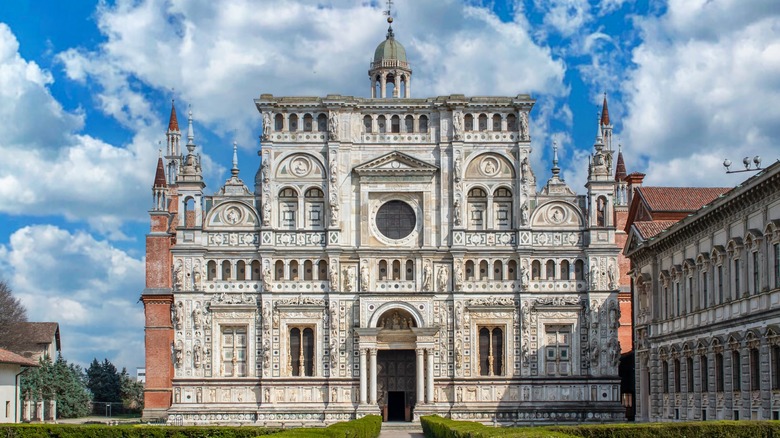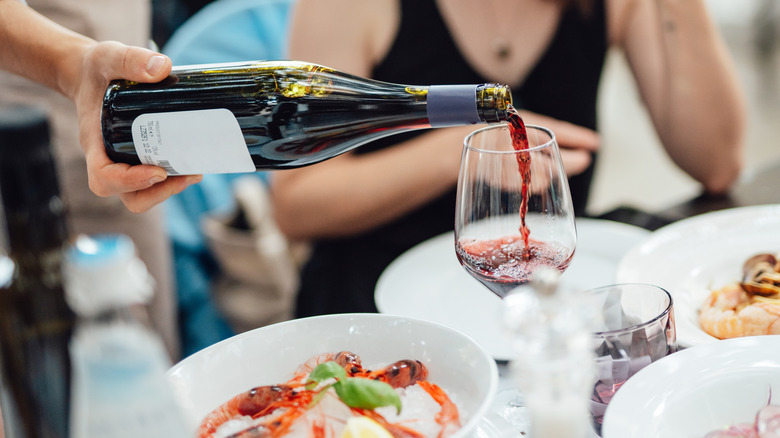One Of Europe's Oldest Universities Is In An Underrated Art And Food-Filled Italian Town
In the heart of Lombardy, just 20 miles from bustling Milan, the charming town of Pavia is home to one of the world's oldest universities. Founded in 1361, the University of Pavia is a prestigious institution with an impressive history. It was the only university in the region for centuries, making it a focal point of intellectual life in northern Italy. Among its renowned alumni are figures like Christopher Columbus, whose voyages paved the way for European colonization of the Americas, Alessandro Volta, the pioneering physicist known for his contributions to modern electricity, and Ugo Foscolo, the revolutionary poet.
Today, the university hosts over 24,000 students in a town of around 70,000 residents, giving Pavia a youthful, international feeling while maintaining the intimate charm of a small town. With 18 departments, 30 libraries, and a global focus on international cooperation and support for developing countries, the University of Pavia continues to be a forward-thinking institution. Its commitment to human and institutional development makes it a hub for those seeking not only academic excellence but also a global perspective.
Despite its scholarly prestige, Pavia remains an underrated tourist destination in Italy, hidden away in comparison to big cities and instantly-recognizable attractions. Yet, the town is a delightful blend of history, culture, and gastronomy that captivates visitors who venture beyond the popular tourist spots.
Amazing food and stellar ambiance
Pavia is a feast for not only the intellect, but also the senses — especially food lovers. The entire province is considered the rice capital of Italy, with over 80,000 hectares of rice paddies stretching across the countryside. This region is also known for its cured meats, fine wines, and local farm produce, each deeply rooted in the area's history and culture.
For fine dining enthusiasts, Ristorante Lino in the heart of the historic center of Pavia is a Michelin-starred gem that delivers elegance in every detail. Known for its refined ambiance and attention to service, it's an unforgettable culinary experience that elevates traditional Lombard flavors. Those keen on a more homey experience can head to La Torre degli Aquila, a cozy trattoria set inside a centuries-old tower. Their small yet curated menu focuses on traditional dishes with a Mediterranean flair. If you can't go without pizza, try Verde Salvia Gourmet, a restaurant offering a unique twist on a famous dish in Italy.
Medieval architecture and art
After you've filled your stomach, it's time to fill your eyes with the spectacular bucket list-worthy paintings and architecture around town. Cobblestone streets wind through thick, stone-built houses and palaces. The Cathedral of Pavia showcases a distinctive red brick exterior, is one of the largest domes in Italy, and took four centuries to complete — a testament to the towns architectural and artistic ambitions.
Be sure to visit Certosa di Pavia, a breathtaking Carthusian monastery founded in 1396. This is a must-see for any visitors, exhibiting Renaissance artistry in the form of stained glass windows, hand painted murals, sculptures, and even lapis lazuli mosaics. This architectural masterpiece is a brilliant fusion of fine art and stonework featuring statues and carvings of saints and emperors.
Back in Pavia, the Visconti Castle —once the residence of the Lord of Pavia-boasts beautiful paintings and sculptures, surrounded by a lush park. Amongst the architecture, the castle boasts a large collection of museums for those keen to learn more about the Medieval and Roman times of days past. Take a stroll across the Ponte Coperto, a reconstructed Medieval bridge for delightful views of the town and the brightly painted Borgo Ticino fishing neighborhood across the way. Pavia is a place that feeds the body and the soul, and while it might not be on every traveler's radar, this art-filled town and underrated destination for foodies is certainly worth discovering.


